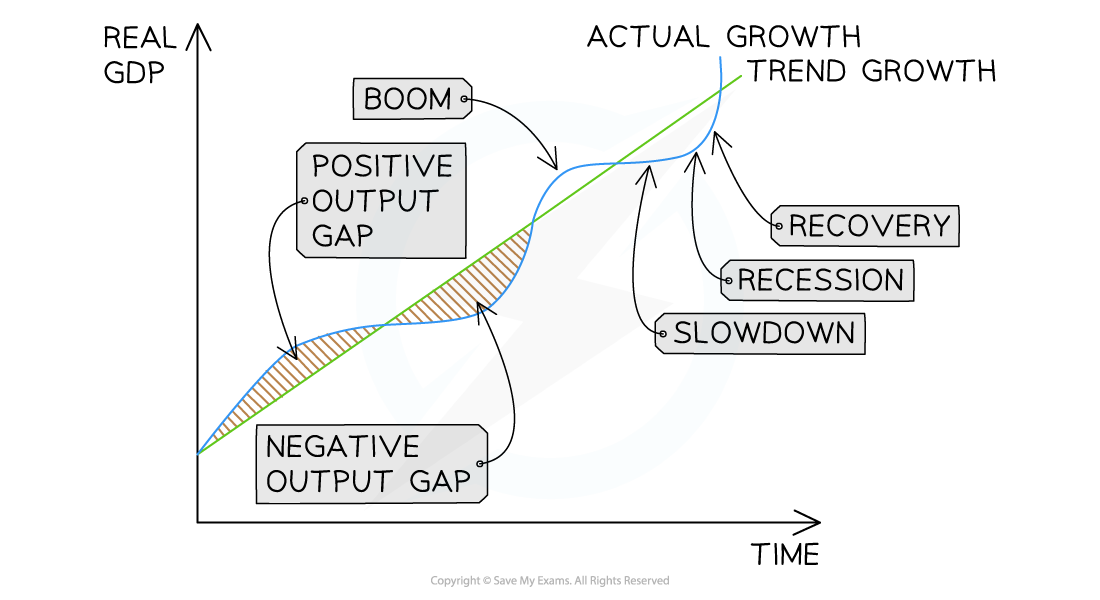- 翰林提供学术活动、国际课程、科研项目一站式留学背景提升服务!
- 400 888 0080
Edexcel A Level Economics A:复习笔记2.5.3 Trade (Business) Cycle
Trade (Business) Cycle
- A trade (business) cycle refers to the changes in real GDP that occur in an economy over time
- This is the actual growth
- The real GDP will fluctuate above and below the long-term trend rate of growth
- There are four recognisable points in the cycle
- Peak/boom; slowdown/downturn; recession, recovery

A Trade Cycle Diagram that illustrates the fluctuations of real GDP (actual growth) around long-term trend growth
Diagram Analysis
- A positive output gap is identified as growth of real GDP that is above the trend
- A negative output gap is identified as growth of GDP that is below the trend
- There is often a natural flow through the different stages from boom to slowdown to recession to recovery
- This flow of real GDP can be moderated by government intervention
- E.g. increasing taxes in a boom period or increasing spending in a recession
A Table Explaining the Characteristics of a Boom & Recession
| Characteristics of a Recession | Characteristics of a Boom |
| Two consecutive quarters (6 months) or more of negative economic growth | Increasing/high rates of economic growth |
| Increasing/high unemployment | Decreasing unemployment and increasing job vacancies |
| Increasing negative output gap and spare production capacity | Reduction of negative output gap or creation of a positive gap. Spare capacity is reduced or eliminated |
| Low confidence for firms/households | High confidence and more risky decisions taken |
| Low inflation | Increasing rate of inflation - usually demand pull |
| Increase in government expenditure perhaps leading to a great budget deficit | An improvement in the government budget as tax revenues rise and expenditure falls |
Exam Tip
You will often be examined on the characteristics of the trade cycle. Remember to demonstrate critical thinking around the assumptions of the model. For example, some firms may thrive during a recession as consumers switch to purchasing inferior goods (Poundland).
Additionally, the components of aggregate demand do not rise/fall at the same rate. For example, during recovery, consumption may increase well ahead of investment by firms.
An economy may also experience some fundamental restructuring during a prolonged recession and the composition of real GDP growth may be significantly different to what is was before the recession.
转载自savemyexams

最新发布
© 2025. All Rights Reserved. 沪ICP备2023009024号-1









